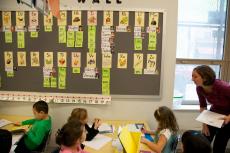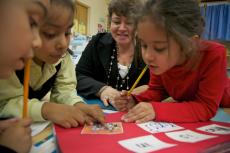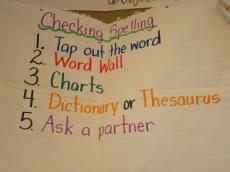Phonological Awareness and Phonics Assessments
Postcards from a Journey: Rough Draft Insights from the Science of Reading Discussion
Postcards from a Journey: Rough Draft Insights from the Science of Reading Discussion
Children need to be able to orally blend and manipulate parts of compound words, syllables, and individual phonemes into words and to segment words into those same word parts. These phonological skills provide a necessary foundation for readers and writers. Only when children are able to hear parts of words and blend them together to say a word, can they solve words as readers Only when they can hear a word and segment it into parts orally can they record the spellings of a word as they write.
You will want to first give the quick Blending and Segmenting: Robot Talk assessment and then use the more detailed Phonological to children who are struggling with phonemic awareness. You will probably start giving this assessment in the fall of kindergarten, and continue to assess the progressively more complex skills as children are ready, and if needed. Below, you’ll find the assessments in order of complexity.
In addition to studying students’ use of phonics when they read books, you can study their phonics skills when they read words in isolation. We’ve included phonic blending assessments that are organized by phonics feature, which will allow you to learn more about how children are consolidating the topics you work on during Phonics Workshop. You’ll find assessments that will give you insight into children’s understanding of short vowels (cvc), digraphs and blends (ccvc), long vowel patterns and r-controlled vowels, as well as the act of blending.
You’ll see that for each assessment, there are two sets of words to decode, one set of low-frequency words and one set of nonsense words. Reading, no matter what, is a meaning-making activity. After a reader decodes a word, the next step is to confirm that what was read is, in fact, a word. And if it isn’t, further action is needed. That moment of confirmation is important. For this reason, our assessment uses low-frequency words -- words that kids are likely to have heard before but are less likely to have seen in print. That is, we hope to ensure that the reader will need to decode during the assessment, and that they can do the essential work of confirming the word.
Because we can’t be certain that the words aren’t known sight words for particular readers (and thus won’t allow us to actually assess their phonic blending) we have also included phonic blending assessments that use nonsense words. We recommend starting with low-frequency words and continuing to assess with nonsense words if you feel you need more information about a child’s use of phonics when reading.
Our spelling assessments are drawn from Donald R. Bear's Words Their Way. Three levels of spelling inventories are offered to you here. If your students spell with relative accuracy for their grade level, you may wish to start with the inventory that corresponds to your grade level grouping. If your students struggle significantly to spell accurately, you might start with an inventory below your grade level grouping.
The purpose of this assessment is to determine the number of high-frequency words that students control in spelling. Control means they recognize the words immediately and write them automatically. If a student is able to spell a word automatically, attention is freed to focus on the content he or she is attempting to convey. This assessment can be used throughout the year to record students' growth in control of high frequency words.



